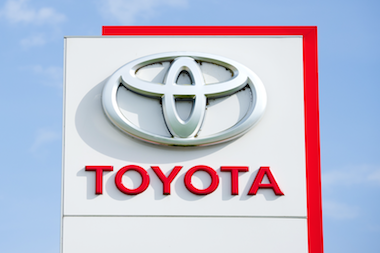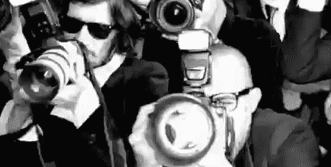Lessons in crisis management: Merlin, BP, Toyota & Siemens

What crisis management lessons can be learned from the Alton Towers crash and other organisations that have faced up to tragedy?
Jermaine Haughton
Crisis management is, by its nature, hard. The road to redemption for Alton Towers’ public reputation will be long and difficult. Merlin Entertainments, the theme park’s owner, recently admitted that the rollercoaster crash on June 2, which left four people seriously injured, could also wipe up to £47m off the company's profits.
The company has been praised for its straightforward response to the tragedy. Merlin Entertainments’ chief executive Nick Varney has kept his statements clear and unspun: “This has been a terrible experience for everyone involved and one we sincerely regret. Our thoughts remain with those who were seriously injured and we are doing everything we can to support them through this difficult time. It is an accident that should not have happened, and we are determined that it will never happen again.”
Insights looks at what lessons can be learned from previous corporate crises?
BP
Still the largest ever accidental release of oil into marine waters, British Petroleum received a major blow to its international reputation, as the 2010 explosion at one of its oil rigs in the Gulf of Mexico killed 11 crew members and had a devastating effect on the environment and wildlife. The public uproar was particularly intense as BP had been fined $50m (£32.5m) by the US Department of Justice only three years earlier for safety violations at a Houston refinery that exploded in 2005, killing 15 people and injuring 170. BP’s reputation was, and still is, tarnished.
Crisis management lessons?Pay necessary settlements: Earlier this month, BP announced an agreement to pay $18.7bn (£12bn) to settle all claims arising from the incident according to The Wall Street Journal. This was an important move that prevented the case being further dragged through the courts. Although the sum is vast, the settlement secures BP’s future to run its affairs and will enable it to focus on its other operations.
Leaders must set the tone: Following the clean-up of the Deepwater Horizon oil spill, BP dismissed Tony Hayward as company CEO and replaced him with Bob Dudley. The move was inevitable, as the British-born Hayward had been vilified for both allowing the oil spill to occur and for failing to reassure the public that the incident was being rapidly resolved. The New York Times famously labelled Hayward, “The most hated – and most clueless – man in America.” Hayward had become the human embodiment of the catastrophe, perceived as lacking compassion and conviction. The lesson here is that leaders must personify the solution to the crisis, rather than its cause.
TOYOTA

The Japanese carmaker’s reputation plummeted after a safety fault in its cars led to the death of four Americans and forced Toyota to make its largest ever recall of cars back to the production line. By the end of 2010, Toyota had recalled a total of 8.8 million vehicles because of floor mats that trapped accelerator pedals and caused crashes.
Crisis management lessons?Don’t ignore concerns: Toyota’s response to the initial fears of safety problems in its cars was lamentably slow. Rather than senior management taking responsibility, the company sent out PR teams to try and stop the media backlash. When further crashes led Toyota to admit there was a problem, the company faced an even bigger obstacle to reassure customers, as public perception was already skewed against the company.
Executives are visible: In attempting to regain consumer trust, Toyota made sure its senior management were highly visible and approachable to the public. During 2010, when recalls were at their peak, Toyota leaders – including US motor sales president Jim Lentz — spoke regularly to print and broadcast media, as well as holding community chats via Digg Dialogg and Twitter.
Toyota’s national interactive marketing manager, Kimberley Gardiner, commented at the time: “It personifies the idea that, yes, Toyota is a brand, but Toyota is also a collection of leaders and people who care and who want to assure customers that we’re making every effort to do the right thing […] It humanizes the brand.”
SIEMENS

Corruption almost led to the downfall of the German technology corporation after regulatory investigations in November 2006 revealed that Siemens was guilty of paying multi-million pound bribes to win contracts. The company’s reputation as one of Europe’s leading engineering firms teetered; investors, customers and staff all criticised the integrity of the firm’s senior management.
Crisis management lessons?Bring in independent figures: The company made the shrewd move of appointing leading anti-corruption expert Michael Hershman, co-founder of Transparency International, to serve as its adviser during the crisis. Siemens also hired more than 500 full-time compliance officers, as well as rebooting its compliance processes.
Culture change: Internal investigations found that an overly aggressive growth strategy and a detachment between the C-suite and its departments had contributed to Siemens’ bribery scandal. So the company sought to change the working culture of the firm, creating a web portal for employees to evaluate risk in their client and supplier interactions. It also launched a comprehensive training and education programme on anti-corruption practices for its employees.
Images courtesy of JuliusKielaitis, TK Kurikawa & 360b via Shutterstock

Press & Media Enquiries
For more information or to request interviews, contact CMI's Press Team on 020 7421 2705 or email press.office@managers.org.uk


